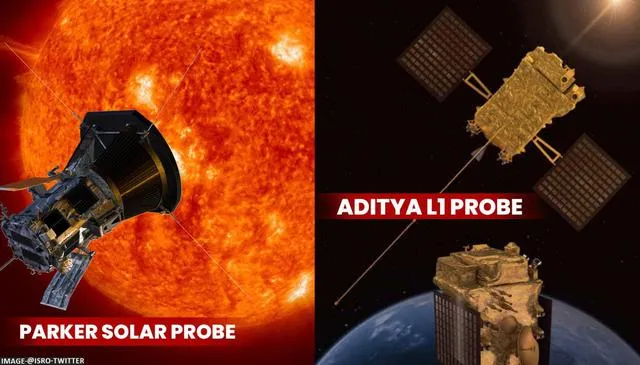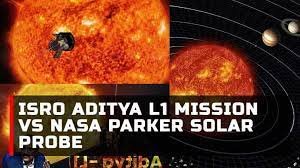ISRO’s Aditya-L1 vs NASA’s Parker Solar Probe: Their Sun Study Missions
The universe has always fascinated mankind, and space agencies worldwide have been working tirelessly to explore its mysteries. In recent years, solar missions have gained significant importance. Two prominent players in this field, ISRO (Indian Space Research Organisation) and NASA (National Aeronautics and Space Administration), have launched their missions, Aditya-L1 and Parker Solar Probe, respectively. These missions aim to study the Sun and unravel its secrets. In this article, we will delve into the significance of these missions, their historical context, and five key takeaways for students preparing for various government exams.

Why this News is Important:
Understanding the Significance of Solar Missions
Solar missions like Aditya-L1 and Parker Solar Probe play a crucial role in advancing our understanding of the Sun, which is essential for various scientific and practical reasons. These missions help scientists monitor solar activities, predict space weather, and develop technologies to protect Earth’s communication and navigation systems.
ISRO’s Aditya-L1: A Proud Endeavor
Aditya-L1, India’s first solar mission, is designed to study the Sun’s outermost layer, the corona, and the impact of solar activities on the Earth’s climate. It’s a testament to India’s growing prowess in space exploration and scientific research.
NASA’s Parker Solar Probe: A Close Encounter with the Sun
Parker Solar Probe, named after Dr. Eugene Parker, is humanity’s first mission to “touch” the Sun. It will get closer to the Sun than any previous mission, providing unprecedented insights into solar phenomena.
Historical Context:
To appreciate these missions, it’s essential to understand the historical context. The study of the Sun dates back centuries, but significant advancements occurred in the 20th century with the development of space technology. The launch of Sputnik by the Soviet Union in 1957 marked the beginning of space exploration, and subsequent missions like the Solar and Heliospheric Observatory (SOHO) by NASA and ESA (European Space Agency) greatly expanded our knowledge of the Sun.
In 2013, NASA launched the Parker Solar Probe, named after Dr. Eugene Parker, who proposed the existence of the solar wind in the 1950s. This mission aimed to study the Sun’s outer atmosphere, known as the corona, and its magnetic fields.
ISRO’s Aditya-L1, announced in 2018, is India’s mission to study the Sun. It’s named after the Sun god, Aditya, and will focus on understanding the Sun’s outermost layer and its impact on climate change.
Key Takeaways from “ISRO’s Aditya-L1 vs NASA’s Parker Solar Probe”
| Serial Number | Key Takeaway |
|---|---|
| 1. | Aditya-L1 is ISRO’s first solar mission, focusing on the Sun’s corona and its effects on Earth. |
| 2. | Parker Solar Probe is NASA’s mission to get closer to the Sun than ever before, providing groundbreaking data. |
| 3. | Solar missions are crucial for studying solar activities and predicting space weather, benefiting Earth’s technology. |
| 4. | Dr. Eugene Parker’s pioneering work on solar wind led to the naming of the Parker Solar Probe. |
| 5. | These missions represent international collaboration and scientific advancement in understanding the Sun. |
Important FAQs for Students from this News
Q: What is the main objective of ISRO’s Aditya-L1 mission?
A: The main objective of ISRO’s Aditya-L1 mission is to study the Sun’s outermost layer, the corona, and understand its impact on Earth’s climate.
Q: How does NASA’s Parker Solar Probe differ from previous solar missions?
A: NASA’s Parker Solar Probe is unique because it will get closer to the Sun than any previous mission, providing unprecedented data on solar phenomena.
Q: Why is studying the Sun important for Earth?
A: Studying the Sun is crucial for predicting space weather, which can affect Earth’s communication and navigation systems. It also helps in understanding climate change.
Q: Who is Dr. Eugene Parker, and why was the Parker Solar Probe named after him?
A: Dr. Eugene Parker is a renowned astrophysicist who proposed the existence of the solar wind. The probe was named after him to honor his pioneering work in solar physics.
Q: What role do solar missions play in international collaboration and scientific advancement?
A: Solar missions like Aditya-L1 and Parker Solar Probe represent international collaboration in space exploration and contribute significantly to advancing our understanding of the Sun and its effects.
Some Important Current Affairs Links

















